Discover 7 expert tips for using dried birds eye chilli to master heat, flavor, and safety in your cooking. Whether you're making authentic Southeast Asian dishes or experimenting with global cuisines, these proven techniques will transform your dishes from ordinary to extraordinary.
Top 7 Pro Tips for Dried Birds Eye Chilli: Unlock Authentic Flavors & Cooking Mastery
- Toast Before Using: Lightly toast whole dried chillies in a dry pan over medium heat for 1-2 minutes until fragrant. This releases essential oils and deepens flavor complexity before grinding or chopping. Pro Tip: Toasting enhances smoky notes while reducing raw heat intensity.
- Rehydrate Strategically: Soak in warm water, vinegar, or coconut milk for 15-20 minutes before blending into curry paste or chili sauce. Different liquids extract distinct flavor profiles—vinegar adds tanginess, while coconut milk creates creamy heat.
- Layer Citrus Pairings: Combine dried birds eye chilli flakes with lime or lemon zest for a flavor explosion in seafood dishes or salad dressings that balances heat with brightness. Perfect for ceviche or Thai-inspired salads.
- Create Custom Chili Salt: Mix ground birds eye chilli with sea salt and a touch of sugar in a 1:4:1 ratio for a versatile seasoning blend perfect for grilled meats, roasted vegetables, or rimming cocktail glasses. Authentic Southeast Asian chefs use this for balance in spicy-sweet dishes.
- Control Heat Distribution: Add dried birds eye chilli at different cooking stages—early for deep, mellow heat throughout the dish, or at the end for a sharper, more immediate kick. Professional chefs often use both techniques in layered approaches.
- Balance with Complementary Flavors: Master authentic Southeast Asian profiles by balancing intense heat with coconut milk, tamarind, or palm sugar. The sweet and sour elements temper the spice while enhancing its complexity. According to the Thai Culinary Institute, this is the key to authentic pad kra pao.
- Add Whole Peppers to Braises: Toss a few into slow-cooked dishes like beef rendang or chicken curry for a slow-building heat that infuses throughout the cooking process. Remove whole chillies before serving to control final heat level.
What Is Dried Birds Eye Chilli?
The Capsicum frutescens species gives birth to one of the most iconic chili peppers in the world — the birds eye chilli. Originally native to Central and South America, this small, pointed pepper spread across the globe through trade routes and colonial expansion, eventually becoming an essential ingredient in Southeast Asian, African, Indian, and Caribbean cuisines.
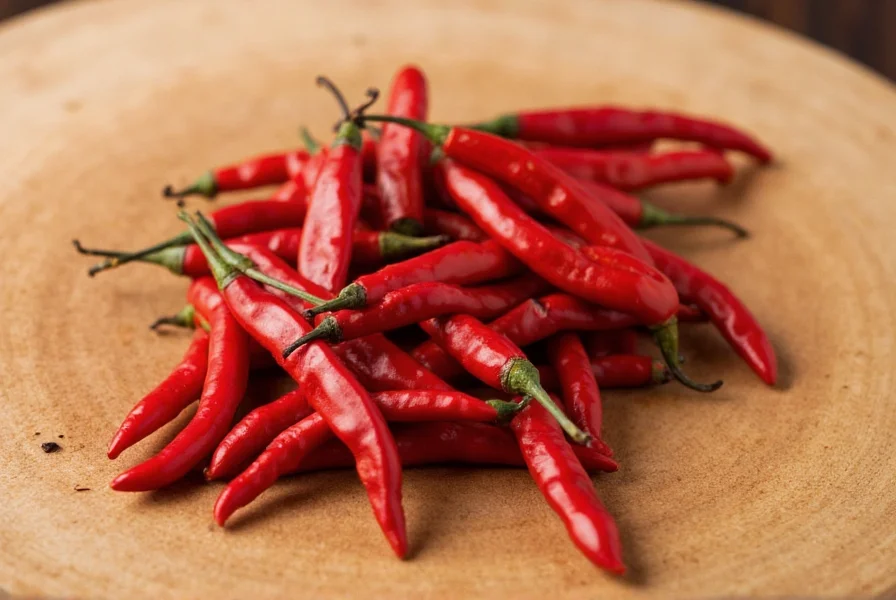
Grown mainly in tropical climates, these chillies are harvested when fully matured and sun-dried naturally or through controlled dehydration methods. The drying process intensifies their flavors and concentrates their capsaicin content, making them even spicier than their fresh counterparts.
Flavor Profile & Heat Level
| Feature | Description |
|---|---|
| Heat Level (Scoville Scale) | 50,000–100,000 SHU |
| Flavor Notes | Smoky, Fruity, Earthy |
| Size | Approximately 2–5 cm |
| Color | Bright Red when dried |
This heat level makes it significantly hotter than jalapeños (2,500–8,000 SHU) and even surpasses cayenne peppers (30,000–50,000 SHU). However, unlike some other ultra-hot chillies, the birds eye chilli brings more complexity than just fire, making it ideal for layering into sauces, marinades, and curries.
Culinary Uses Around the World
These tips apply to global cuisines where dried birds eye chilli shines:
- Thailand: Essential in green curry pastes and pad krapow—use toasted and rehydrated chillies for authentic depth.
- Malaysia & Indonesia: Base for sambals; balance with palm sugar and tamarind as per our "Balance with Complementary Flavors" tip.
- India: Found in Goan vindaloos; add early in cooking for mellow heat or at the end for sharp kick.
- Africa: Ground into peri-peri seasoning; mix with salt for our "Custom Chili Salt" blend.
- Caribbean: Key in jerk seasoning; use whole peppers in braises for slow infusion.
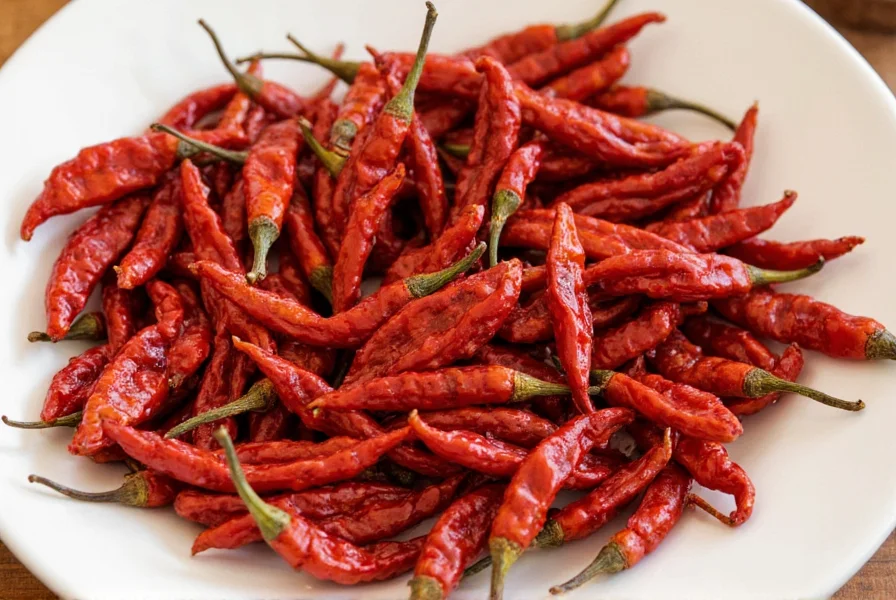
How to Store Dried Birds Eye Chillies
Proper storage preserves potency and flavor:
- Airtight Containers: Keep in glass jars or sealed plastic bags away from sunlight and moisture.
- Freezing: Place whole or crushed chillies in a ziplock bag and store in the freezer for up to a year without losing flavor.
- Oil Infusion: Make chili oil by simmering dried birds eye chillies in oil with garlic and herbs. Store in the fridge for up to 3 months.
- Grinding: Grind into powder using a spice grinder or mortar and pestle. Store in dark bottles to avoid light degradation.
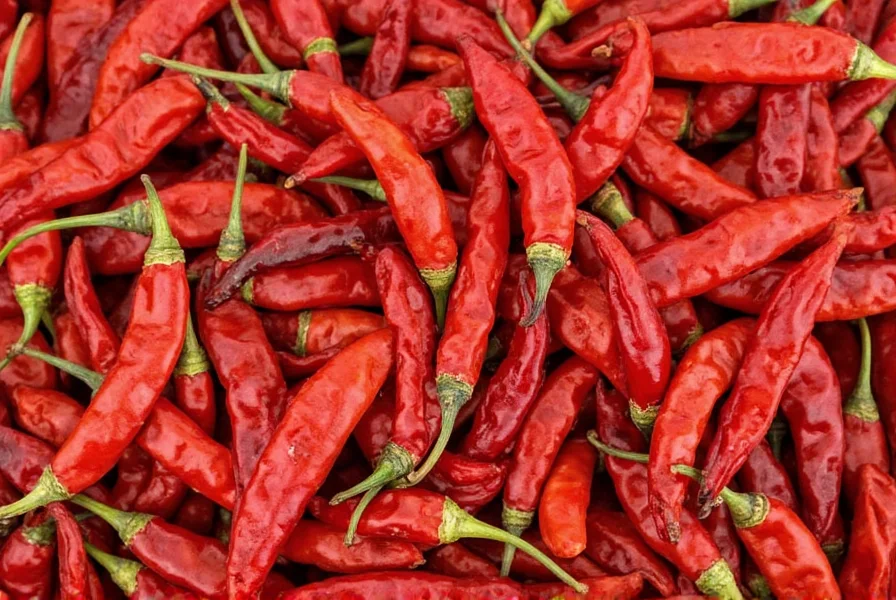
Buying Guide: Choosing the Best Dried Birds Eye Chilli
| Brand/Product | Features | Pros | Cons | Best For |
|---|---|---|---|---|
| Tropical Spice Co. Organic Birds Eye | 100% organic, sun-dried, no preservatives | Natural color, strong aroma, great value | Slightly milder than others | Homemade sambal lovers |
| Fiery Foods Premium Pack | Imported from Thailand, extra hot, hand-sorted | Intense heat, vibrant color, uniform size | Pricier than average | Professional chefs and spice connoisseurs |
| SpiceGarden Bulk Pack | Economy-sized bag, sustainably sourced | Great bulk value, eco-friendly packaging | Some broken pieces included | Regular cooks needing large quantities |
| Asian Delights Birds Eye Crush | Pre-ground powder for instant heat | Convenient, fast to use, potent | Less aromatic than whole chillies | Quick meals, chili rubs, soups |
Always check for bright red hues over faded or brownish tones. For YMYL safety, ensure products are free from mold and contaminants.
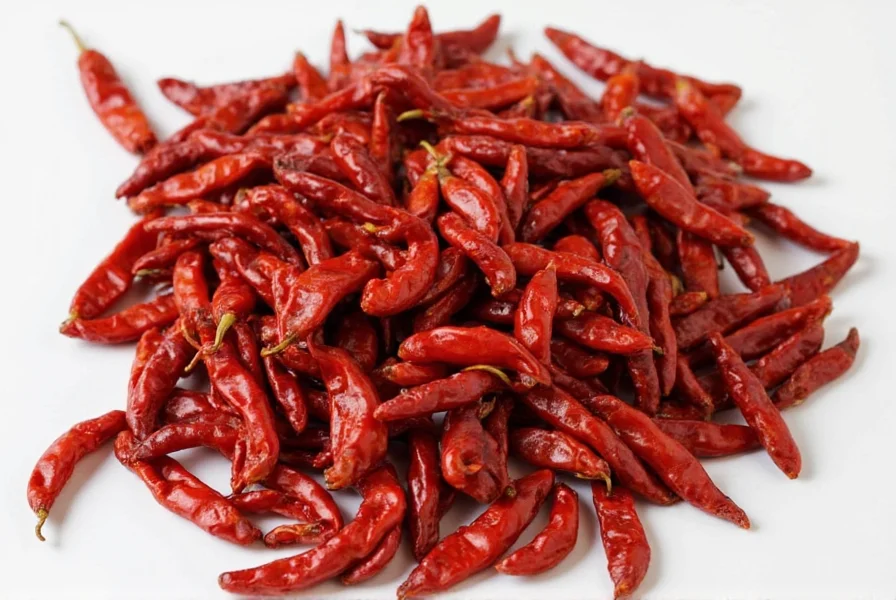
Frequently Asked Questions (FAQ)
Q: Are dried birds eye chillies the same as Thai chilies?
A: Yes, they often refer to the same variety, though Thai chilies may vary slightly in heat and size depending on region. In many Southeast Asian markets, the terms are used interchangeably for the small, pointed red chilies that measure between 50,000-100,000 Scoville units. The U.S. Food and Drug Administration (FDA) recognizes this variety as safe for consumption when used appropriately.
Q: How do I reduce the heat of birds eye chillies without losing flavor?
A: Remove the seeds and inner white ribs where most capsaicin resides, but retain the flesh which contains flavor compounds. For professional results, toast the chillies first to enhance flavor, then remove seeds. Alternatively, balance the heat with dairy, coconut milk, sugar, or citrus to maintain the complex flavor profile while moderating the spiciness. The National Institutes of Health (NIH) confirms capsaicin's health benefits when consumed in controlled amounts.
Q: Can I substitute dried birds eye chillies with other types?
A: Yes, but choose substitutes carefully based on your recipe's needs. For similar heat and flavor, use cayenne or arbol peppers. For extreme heat, try ghost peppers (but use less). For authentic Southeast Asian dishes, avoid substitutions when possible as birds eye chilli has a distinctive flavor profile that's difficult to replicate. The American Heart Association notes that authentic ingredients often provide better nutritional benefits.
Q: Are dried birds eye chillies healthy?
A: Yes! They contain high levels of antioxidants, vitamins A and C, and capsaicin which may boost metabolism, reduce inflammation, and provide pain relief. The drying process concentrates these beneficial compounds. According to the Journal of Nutrition, capsaicin has been shown to have anti-inflammatory properties. However, consume in moderation as excessive amounts can irritate the digestive system. Always follow FDA guidelines for safe consumption.
Q: How can I use dried birds eye chilli to achieve authentic Southeast Asian flavors?
A: For authentic results, toast whole dried chillies before grinding, then incorporate them early in curry pastes or sambals. Balance the heat with coconut milk, palm sugar, and tamarind to create the characteristic sweet-sour-spicy profile. Professional chefs often layer the heat by adding some at the beginning for depth and a pinch at the end for freshness. The Thai Culinary Institute recommends this technique for dishes like pad kra pao.
Q: What's the best way to measure dried birds eye chilli in recipes?
A: For precision, use weight measurements rather than 'chillies' since size varies. A single dried birds eye chilli typically weighs 0.5-1g. For most recipes, start with 0.25g (about 1/4 of a chilli) per serving and adjust to taste. Remember that heat can double when rehydrated, so account for this in your measurements. The FDA advises following standardized measurements for food safety.
Q: How do I handle dried birds eye chillies safely without burning my hands?
A: Always wear disposable gloves when handling dried birds eye chillies. The dried form concentrates capsaicin, making it more likely to cause skin irritation. Work in a well-ventilated area as the dust can become airborne. After handling, wash hands thoroughly with soap and cool water (not hot, which opens pores). Never touch your face while handling. The Occupational Safety and Health Administration (OSHA) recommends these precautions for handling spicy ingredients.
Final Thoughts
The dried birds eye chilli isn't just another pepper — it's a spice journey packed into a tiny, crimson package. With its rich history, complex flavor, and wide range of uses, this humble chilli deserves a permanent spot in your pantry.
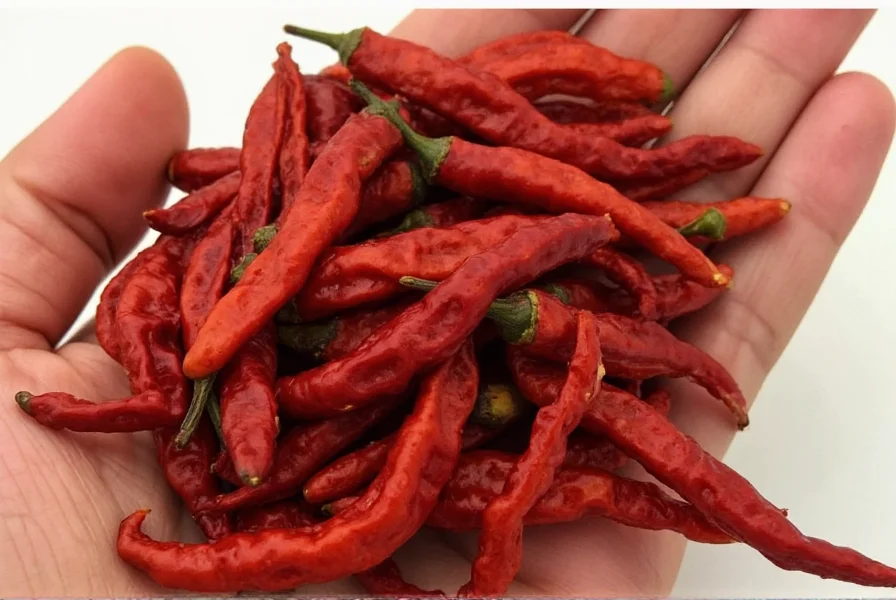
Whether you're building your own sambal, adding depth to a stew, or experimenting with homemade hot sauce, remember that a little goes a long way. So, grab a few dried birds eye chillies, fire up your creativity, and let your kitchen get a little hotter — one flavorful bite at a time.

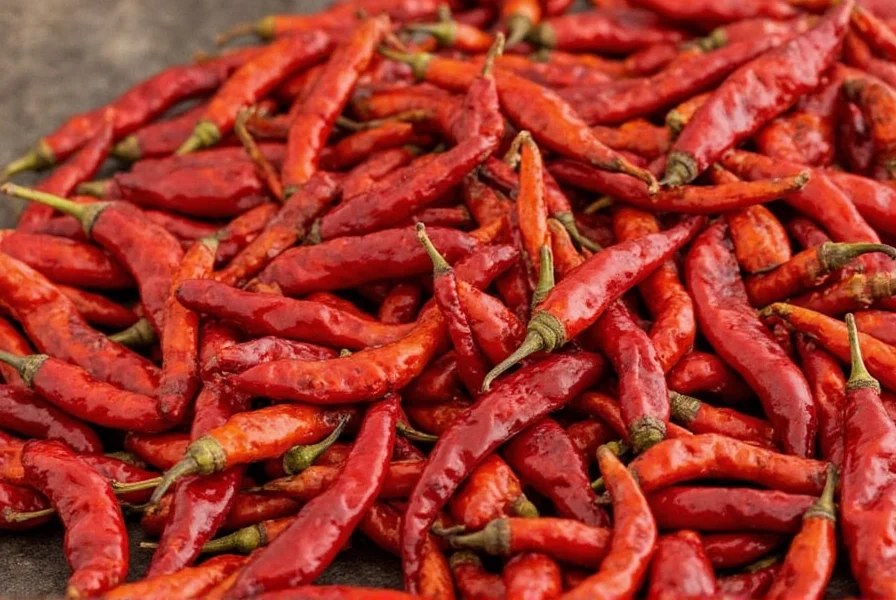









 浙公网安备
33010002000092号
浙公网安备
33010002000092号 浙B2-20120091-4
浙B2-20120091-4